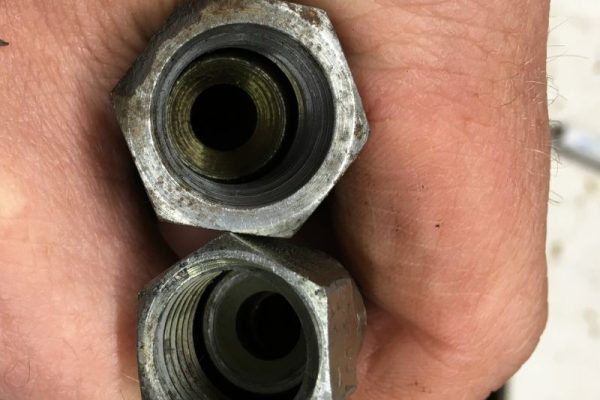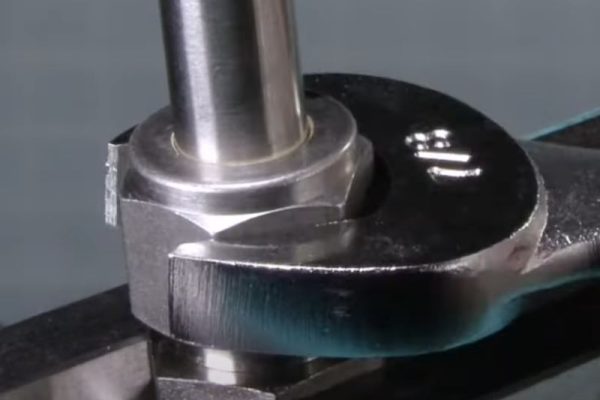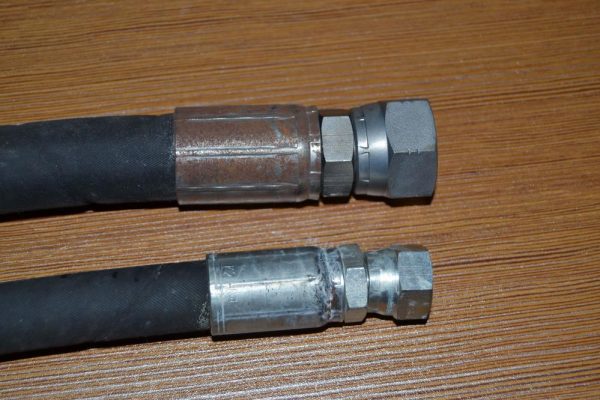Despite their efficiency and power, hydraulic systems are inevitably prone to problems, the most common and troublesome of which is leakage. More than just a nuisance, hydraulic fitting leaks pose a significant threat to system efficiency, safety and the bottom line of operating costs. Leaks can lead to degraded performance, potential safety hazards due to slippery surfaces, and increased environmental concerns. This article takes a deep dive into the top 10 leading causes of leaks in hydraulic fittings, providing insight into why leaks occur and, most importantly, how to prevent them.
Hydraulic fitting leaks represent a significant challenge in the operation and maintenance of hydraulic systems. These leaks are unintended releases of fluid from the system, which can occur at connection points between components or within the components themselves. Leaks are not only a sign of potential system failure but also indicators of underlying issues that could lead to more severe problems if not addressed.
The early identification and resolution of leaks are paramount. Even a minor leak can quickly develop into a major problem, potentially stopping operations and leading to expensive repairs. The reasons for this are manifold:
Safety Hazards: Leaks can create slip hazards and, depending on the fluid, may pose fire risks.
Environmental Impact: Spilled hydraulic fluid can harm the environment, leading to fines and cleanup costs.
Operational Efficiency: Leaks can reduce the effectiveness of a hydraulic system, leading to decreased performance and increased wear on components.
Cost: The loss of hydraulic fluid and the potential for damage to machinery can lead to significant costs over time.

Improper installation of hydraulic fittings is a prevalent cause of leaks. This can result from several factors, including inadequate tightening, misalignment of fittings, or the use of incorrect tools during installation. These mistakes can significantly compromise the integrity of the seal, leading to leaks that can affect the system’s efficiency and safety.
Key Points:
Adequate Tightening: Ensuring that fittings are tightened to the manufacturer’s specifications is crucial. Over-tightening can damage threads or fittings, while under-tightening may not form an adequate seal.
Correct Alignment: Fittings must be properly aligned to prevent cross-threading and ensure a proper seal.
Appropriate Tools: Using the correct tools for installation is essential to avoid damaging the fittings. Specialized hydraulic tools should be used according to the specifications of the fitting type and size.
Material incompatibility in hydraulic systems can lead to a variety of issues, most notably leaks. This incompatibility can occur between the hydraulic fluid and the materials used for fittings and seals within the system. Different hydraulic fluids have unique chemical properties that can adversely affect the materials they come into contact with if not properly matched.
Hydraulic fluids can vary widely in their chemical composition. Common types include mineral oils, synthetic fluids, and water-based fluids, each with specific characteristics and applications. The choice of hydraulic fluid depends on various factors, including the operating temperature range, environmental concerns, and the specific machinery’s requirements.
The interaction between hydraulic fluid and the materials used in the system’s components can lead to:
Corrosion: Some fluids can cause corrosion of metal components, particularly if the metals are not suited to the type of fluid used.
Swelling of Seals: Certain hydraulic fluids can cause rubber or polymer seals to swell, leading to compromised seal integrity and eventual leaks.
Degradation: Over time, incompatible fluids can degrade the materials in seals and fittings, making them brittle or causing them to break down, which can result in leaks.
To ensure the long-term integrity of hydraulic systems and prevent leaks, it’s crucial to select materials that are compatible with the chosen hydraulic fluid. This involves:
Understanding Fluid Properties: Familiarize yourself with the chemical properties of the hydraulic fluid being used and how it interacts with different materials.
Choosing the Right Seals and Fittings: Select seals and fittings made from materials known to be compatible with your hydraulic fluid. Manufacturers often provide compatibility charts or guides to assist in this process.
Regular Inspection and Maintenance: Even with compatible materials, regular inspection and maintenance are essential to identify early signs of wear or degradation that could lead to leaks.

The correct installation of hydraulic fittings is critical to the integrity and proper functioning of hydraulic systems. Two common mistakes that can lead to leaks are over-tightening and under-tightening of fittings. Both can compromise the system’s performance and lead to significant issues over time.
Over-tightening hydraulic fittings can cause several problems:
Stripped Threads: Applying too much torque can strip the threads of the fitting or the component it’s being attached to, making it difficult or impossible to achieve a proper seal.
Cracked Fittings: Excessive force can also crack or damage fittings, especially those made from more brittle materials.
Deformed Sealing Surfaces: Over-tightening can deform the sealing surfaces, leading to leaks.
To prevent over-tightening, it’s essential to use a torque wrench and adhere to the torque specifications provided by the manufacturer. This ensures that the fitting is tightened sufficiently without exceeding the recommended torque, preserving the integrity of the connection.
Under-tightening, on the other hand, fails to create a seal tight enough to prevent leaks. This issue might not be immediately apparent and can lead to gradual leaks, which may worsen over time. Inadequate tightening can result from:
Incorrect Torque Application: Not applying enough torque can leave a gap for hydraulic fluid to escape.
Improper Tool Use: Using the wrong tools for installation can lead to insufficient force being applied to the fitting.
Vibration within hydraulic systems is a prevalent cause of fitting loosening, which can lead to leaks over time. The dynamic nature of hydraulic machinery, combined with the high pressures at which these systems operate, makes them particularly susceptible to the effects of vibration. This can cause even tightly secured fittings to loosen, compromising the integrity of the hydraulic circuit.
Machinery Operation: The regular operation of machinery, especially those involving high-speed movements or heavy loads, generates significant vibration.
Pulsating Pressures: Hydraulic systems often experience pulsating pressures due to the pump action or sudden changes in direction of fluid flow, contributing to vibration.
External Sources: External sources, such as adjacent machinery or environmental factors, can introduce additional vibrational forces to the system.
To prevent vibrational loosening and the resultant leaks, several measures can be implemented:
Securing Lines: Hydraulic lines should be securely clamped at regular intervals to minimize movement and absorb vibrations. This helps to prevent the transmission of vibrational energy to fittings.
Using Anti-Vibration Fittings: Specialized fittings designed to withstand vibrational forces can be used in areas of high vibration. These fittings often include features such as locking mechanisms or flexible sections that absorb vibrational energy.
Locknuts and Thread Locking Compounds: Applying locknuts or thread locking compounds to threaded connections can significantly reduce the likelihood of loosening. These materials provide an additional layer of security, maintaining the integrity of the connection even under vibrational stress.
Regular Maintenance: Incorporating vibrational analysis into regular maintenance routines allows for the early detection of loosening fittings. This enables timely tightening or replacement before leaks can develop.
Temperature fluctuations are a fundamental concern in hydraulic systems, influencing the behavior of materials, including fittings and seals. As temperatures change, the materials used in hydraulic systems will expand or contract. This phenomenon, known as thermal expansion and contraction, can compromise the integrity of hydraulic fittings, leading to potential leaks.
Thermal Expansion: When the temperature increases, the molecules within a material gain energy and move more vigorously, causing the material to expand. In a hydraulic system, this can affect both the metal fittings and the fluid within, altering pressures and potentially causing leaks at connection points.
Thermal Contraction: Conversely, as temperatures decrease, materials contract. This contraction can loosen fittings and seals, creating gaps through which hydraulic fluid can escape.
The effects of thermal expansion and contraction in hydraulic systems can be significant:
Weakening of Seals: Seals are particularly susceptible to temperature changes. Over time, repeated expansion and contraction can cause seals to wear, crack, or become misshapen, losing their ability to prevent fluid leakage.
Fitting Displacement: Temperature variations can lead to the gradual loosening of fittings. For example, a fitting that was tightened under a certain temperature condition may loosen as the system experiences temperature fluctuations, if not properly accounted for during installation.
Designing hydraulic systems to accommodate temperature changes is essential for minimizing the risk of leaks due to thermal expansion and contraction:
Flexible Fittings and Expansion Joints: Utilizing flexible fittings or expansion joints can accommodate the movements caused by temperature fluctuations, maintaining a tight seal despite the expansion or contraction of materials.
Material Selection: Choosing materials with similar coefficients of thermal expansion for both fittings and the surrounding structure can minimize the relative movement between parts.
Temperature Control: Where possible, controlling the temperature of the environment in which the hydraulic system operates can reduce the severity of temperature fluctuations.
Regular Inspections: Routine maintenance should include checking for signs of thermal wear on seals and fittings, and ensuring that any compromised components are replaced before leaks develop.

Wear and tear on hydraulic fittings are inevitable consequences of regular use. Over time, the constant flow of hydraulic fluid at high pressure, coupled with the mechanical movements of system components, leads to the gradual deterioration of fittings and seals. This natural process can significantly contribute to the development of leaks within the system.
Mechanical Stress: Continuous mechanical movements create stress on fittings, gradually wearing down their surfaces.
High-Pressure Operation: The high pressures at which hydraulic systems operate can strain fittings and seals, accelerating their wear.
Environmental Factors: Exposure to harsh environmental conditions, such as extreme temperatures, moisture, and contaminants, can hasten the degradation of materials.
Leakage: As fittings and seals wear out, their effectiveness in sealing connections diminishes, leading to leaks.
Reduced Efficiency: Leaks and deteriorating components can reduce the system’s overall efficiency, requiring more power to achieve the same output.
Increased Maintenance Costs: Frequent replacements and repairs of worn components can lead to increased maintenance costs over time.
To minimize the impact of wear and tear on hydraulic systems, several strategies can be employed:
Routine Maintenance: Establishing a regular maintenance schedule is crucial for early detection and replacement of worn components. Regular inspections can identify wear and tear before it leads to leaks.
Quality Components: Using high-quality fittings and seals can extend the lifespan of hydraulic components. Higher quality materials are typically more resistant to wear and environmental factors.
System Design: Designing hydraulic systems with redundancy and ease of maintenance in mind can reduce the impact of wear and tear. For example, installing easily replaceable sections can minimize downtime and maintenance costs.
Environmental Protection: Implementing measures to protect hydraulic systems from harsh environmental conditions can slow the rate of wear and tear. This may include using protective coverings or installing systems in locations less exposed to extreme conditions.
Seal degradation is a common issue in hydraulic systems that can lead to leaks and decreased system efficiency. Seals within hydraulic fittings are critical for preventing fluid escape by maintaining a tight barrier between moving parts. Over time, these seals can degrade, losing their elasticity and effectiveness, which compromises the integrity of the hydraulic system.
Aging: Rubber and other elastomeric materials used in seals naturally deteriorate over time, losing flexibility and resilience.
Chemical Exposure: Hydraulic fluids, especially those with aggressive chemical compositions, can cause seals to swell, soften, or even disintegrate.
Thermal Stress: Repeated exposure to high temperatures can accelerate the aging process, while extreme temperature fluctuations can cause seals to crack or become brittle.
Mechanical Wear: Constant motion and pressure can physically wear down seals, reducing their sealing capability.
Degraded seals are less effective at containing hydraulic fluid, leading to leaks that can reduce the system’s pressure and efficiency. Even minor leaks can introduce contaminants into the system, further exacerbating wear on components and potentially leading to system failure.
Contamination in hydraulic systems is a significant cause of leaks and component failure. Particulate matter, including dirt, metal shavings, and other debris, can enter the system through various means, such as during maintenance, from component wear, or through contaminated hydraulic fluid. Once inside, these contaminants can cause abrasion and deterioration of fittings and seals, leading to leaks.
External Sources: Contaminants can enter the system from the surrounding environment during maintenance operations or through damaged seals and components.
Internal Sources: Wear and tear on system components can generate particles that circulate within the system, causing further damage.
Abrasion of Components: Particles can abrade the surfaces of components, including the internal walls of hoses and the sealing surfaces of fittings, leading to leaks.
Seal Deterioration: Contaminants can accelerate the degradation of seals, reducing their effectiveness and leading to leaks.
System Blockages: Accumulation of contaminants can lead to blockages in the hydraulic system, impairing function and causing increased pressure that can lead to leaks.
To prevent contamination-related issues in hydraulic systems, several strategies can be employed:
Filtration: Installing high-quality filtration systems can remove particulate matter from the hydraulic fluid, protecting components from abrasion and wear.
Regular Fluid Changes: Regularly changing the hydraulic fluid can reduce the concentration of contaminants and reduce wear on components.
Seal Maintenance: Regular inspection and maintenance of seals can prevent external contaminants from entering the system.
Clean Work Practices: During maintenance, ensuring a clean work environment and using clean tools and components can prevent the introduction of new contaminants.
Using the wrong type or size of hydraulic fitting is a common cause of leaks in hydraulic systems. The hydraulic circuit’s integrity depends on the precise matching of fittings to the system’s specifications, including size, pressure rating, and material compatibility. When fittings do not match these specifications, the result can be inadequate seals, leading to leaks and compromised system performance.
Size Compatibility: The size of the fitting must match the size of the hose or tube it connects. An incorrect size can lead to gaps or excessive pressure on the connection points, causing leaks.
Type Suitability: The type of fitting must be suitable for the specific application, including the fluid type, pressure, and dynamic requirements. Different fitting types offer varying degrees of seal integrity and resistance to vibration, temperature, and pressure fluctuations.
Material Compatibility: The fitting material must be compatible with the hydraulic fluid used in the system. Incompatibility can lead to corrosion or degradation of the fitting, resulting in leaks.
Understanding the causes of leaks in hydraulic fittings is critical to maintaining the efficiency, safety, and cost-effectiveness of hydraulic systems. By proactively addressing these issues, operators can avoid the downtime and expense associated with leaks. We encourage you to ask Topa for any experience or tips you may have in managing leaks in hydraulic fittings and we would be happy to assist you.